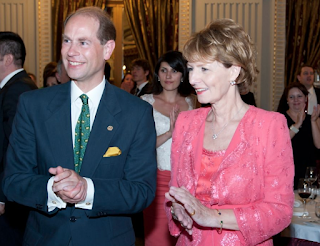The late don Juan, Count of Barcelona, would have been 100 years old on June 20.
The fifth child, third son of King Alfonso XIII and Queen Victoria Eugenia (née Battenberg), Infante don Juan of Spain was born at La Granja de San Ildefonso Palace, near Segovia. He was the third child of the Spanish monarchs to have been born in the palace, Jaime and Beatriz being the other two. The couple's three other children (Alfonso, María Cristina and Gonzalo) were born at the Oriente Palace, a massively beautiful architectural complex in Madrid.
The third son of Alfonso XIII, Juan was the only one of the King's legitimate sons to be free of any ailments. Alfonso, Prince of Asturias, was a hemophiliac, as was Gonzalo, the youngest member of the family. Jaime suffered from auditory problems caused by a botched ear operation. Hence, when the Spanish throne fell and the Royal Family found itself living in exile, King Alfonso XIII had a succession problem at hand. Alfonso Jr's decision to marry a Cuban commoner guaranteed his ouster from the line of succession. He died in 1938 from internal bleeding after a car accident. Jaime's speech and hearing inadequacies made it impossible for him to effectively become a messenger for the Crown's restoration.
King Alfonso asked his son to sacrifice his position in the line of succession to guarantee that the best (meaning healthiest of his sons) candidate, Juan, would be the Royal Family's standard bearer. Jaime signed away his rights and was married off to Emanuela Dampierre, an aristocrat lacking the necessary pedigree for their union to be consider equal. Their two sons, Alfonso and Gonzalo, were later to become a thorn on the side of both their uncle Juan and cousin Juan Carlos.
In 1935, don Juan, who royalists recognized as Prince of Asturias, married his cousin Princess doña María de las Mercedes of Bourbon-Two Sicilies, (1910-2000), herself the daughter of Infante don Carlos and of his wife Luisa, born Princess d'Orléans. María de las Mercedes's siblings included: Carlos (who died in the Spanish civil war), María de los Dolores (who married Prince Czartorisky) and María de la Esperanza (who in 1944 married Prince dom Pedro Gastão d'Orléans-Braganza, elder brother of Bebelle (Isabelle), the Countess of Paris). Doña María, as María de las Mercedes was known, also had two half-siblings from her father';s first marriage to King Alfonso XIII's eldest sister, María de las Mercedes, and they were: Infante don Alfonso, who married Princess Alicia of Bourbon-Two Sicilies, and Infante Isabel Alfonsa, who married Count Zamoisky, a distant cousin on the Sicilian side.
Between 1936 and 1941 doña María gave birth to four children: María del Pilar (b. 1936), don Juan Carlos (b. 1938), doña Margarita (b. 1939) and don Alfonso (1941-1956).
In 1941, don Juan succeeded his father as Head of House, taking the title of Count of Barcelona, one of the sovereign tiles held by the Spanish monarch. He eventually moved his family from Rome to Switzerland and thence to Estoril, Portugal, where the family lived until the late 1970s. His final residence in Estoril, the Villa Giralda, in due time became a place of obligatory pilgrimage for Spanish aristocrats and royalists who labored for the restoration of the Count of Barcelona as King Juan III of Spain. This, of course, never happened since in 1969 General Franco, much to the chagrin of the "Juanistas" (Barcelona's supporters), chose don Juan Carlos as his successor with the title of King. Hence, when Franco died in November 1975, Barcelona's son became King Juan Carlos I of Spain. This caused a rift within the Royal Family, a schism that was finally healed by the spirited intervention of doña María, an indomitable matriarch, with keen political insight and what the Spanish call "pelotas." (balls!)
In late 1970 internal peace was restored within the Royal Family when the Count of Barcelona renounced his dynastic rights and recognized his son as King of Spain.
Eventually, don Juan and doña María relocated to Madrid, where all their surviving children lived.
Don Juan suffered bouts of cancer (he was a heavy smoker) and finally his valiant struggle against the disease was lost in 1993. he died in pamplona, Spain, while undergoing medical treatment, on April 1, 1993. Doña María, an old school Royal matriarch, survived her husband nearly seven years. She passed away on January 2, 2000, surrounded by her family while on vacation on the Canary Islands.
The Zarzuela Palace has announced that the centennial of the birth of don Juan, Count of Barcelona, will be commemorated with a mass at which most of his descendants are expected. This is a fitting, yet quiet, tribute to a great man...one who would have been a fantastic King!
Infante don Juan of Spain.
The Counts of Barcelona in old age.
Don Juan and his son don Juan Carlos enjoying their favorite pastime, sailing.
Both father and son loved the sea and were expert sailors.
The Counts of Barcelona circa 1960 at the time of their Silver Wedding Anniversary.
In spite of myriad challenges, they remained married for nearly six decades.
At the Zarzuela Palace, don Juan renounces his rights and swears allegiance to his son King Juan Carlos. Witnessing this important dynastic event are Queen doña Sofía and the Countess of Barcelona with her son-in-law, the Duke of Badajoz to her right.





























































